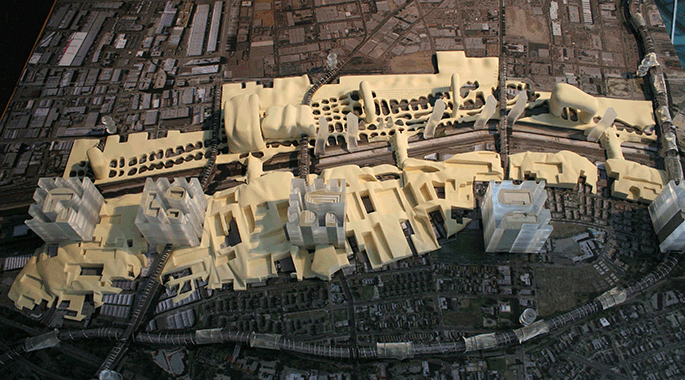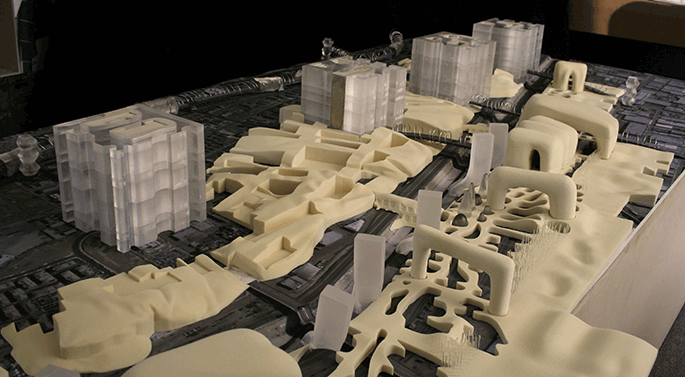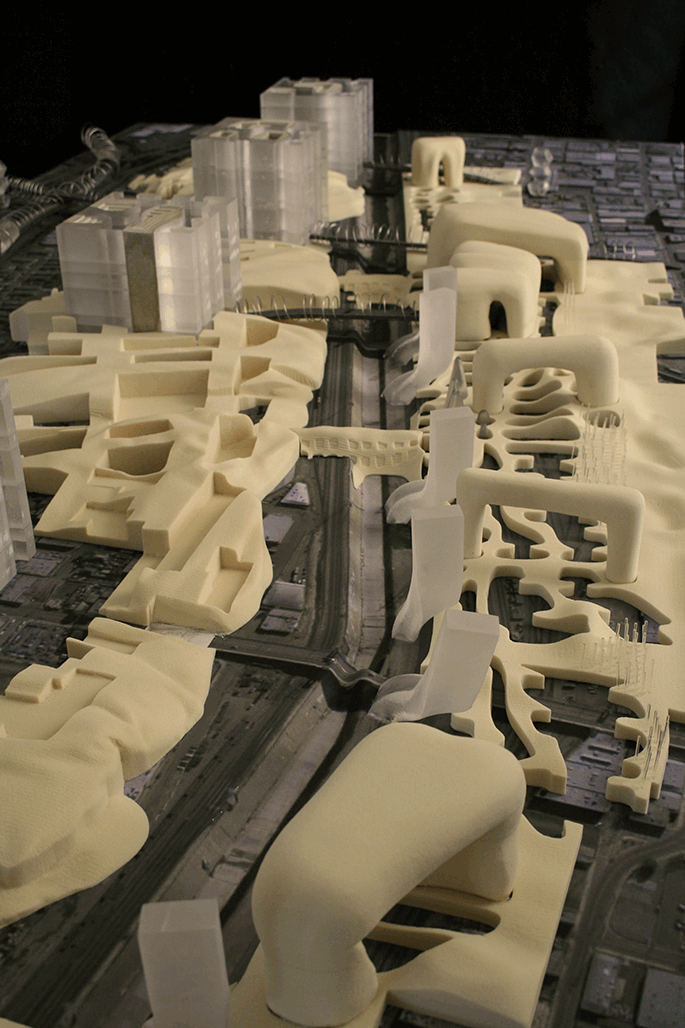Eric Owen Moss Architects – City of the Future
The primary organizational components that define contemporary Los Angeles are enormous works of civil engineering – the railway tracks and bridges; the power grids; the “v” shaped, concrete L.A. River; and the ubiquitous steel and concrete freeways.
The infrastructure, when successful, solves the technical objectives of its design engineers: moves trains; moves power; moves water; moves cars.
But in Los Angeles technical means often become both visual ends and operational limits the original problem solvers never imagined. The cumulative effect of the existing infrastructure is to sub-divide the city, delimit zones of use and purpose, and to segregate by race, and economic capacity.
The freeways, tracks, power grids, and concrete rivers originally designed to connect a horizontal city, often deliver the opposite: the piecemeal city, with infrastructure as a consistent obstacle to the integration of the disparate civic parts.
The solution: reconceive the city by multiplying the purposes of its infrastructure. We intend to build over, under, around, and through the freeways, rivers, power grids, and tracks, to use the existing rights of way as the foundations for a series of new, infrastructure-scaled conceptions of building form, habitation, and public and private purpose that will redefine Los Angeles by strategically re-associating the sociologies, the uses, and the sense of the civic whole the civil engineers have long precluded.




Follow Us!